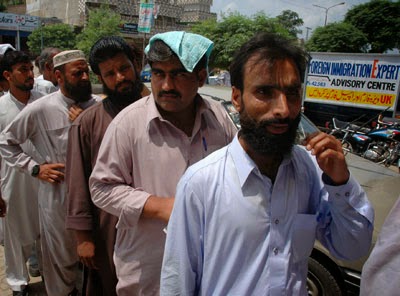 |
| There are three major religions in Southwest Asia and North Africa. Can all three live in peace? Photo by: sodahead.com |
Judaism and Christianity are the oldest known beliefs in the region with Judaism being founded 4,000 years ago and Christianity being founded 2,000 years ago. Judaism and Christianity also are strongly founded on the Holy Bible, however, Judaism only goes as far as the Old Testament, where Christianity also goes on to believe in the works of Jesus Christ and the teachings of him and his disciples that were documented in the New Testament. (3)
"Islam originated in Southwest Asia and North Africa in 622 CE, forming another cultural hearth of global significance. While Muslims can be found today from North America to the southern Philippines, the Islamic world remains centered on Southwest Asia. Most Southwest Asian and North African peoples still follow it's religious teachings." (1)
Why do they follow the religion so closely you may ask? It could be that Muhammad, the founder of Islam, was born in Makkah, which is right inbetween the two regions.
Islam followers are called Muslims, and they follow the teachings received by Muhammad from Allah (God) that are in the book called the Qur'an (Koran).
There are five basic beliefs of the Islamic faith:
"(1) repeating the basic creed [There is no God but God, and Muhammad is his prophet)" (1)
"(2) praying facing Makkah five times daily" (1)
"(3) giving charitable contributions" (1)
"(4) fasting between sunup and sundown during the month of Ramadan" (1)
"(5) making at least one religious pilgrimage, or Hajj, to Muhammad's birthplace of Makkah." (1)
These three major religions struggle over one of the most world-renoun areas...Jerusalem.
Jerusalem is significant to all three religions:
For Judaism, it is the Capital of the Jewish Kingdom. 3000 years BP, faith took form in the first temple. It was destroyed by the Babylonians in 586 BC and rebuilt a second time then destroyed again by the Romans in 70 AD. (2)
For Muslims, it is where the Prophet, Muhammad was ascended into heaven in the 7th Century. (2)
For Christians, Jesus Christ was Crusified and ascended into heaven in Jerusalem, also many of his teachings were based there. (2)
So, here's the question:
With all the conflict, how can all three religions share one region reasonably with no bloodshed? Can it be done?
Works Cited
(1) Rowntree, et al. Globalization and Diversity: Geography of a Changing World. New Jersey: Pearson Prentice Hall, 2011
(2) Sallee, David. "North Africa and Southwest Asia" World Regional Geography. Web. (Rephrased)
http://geography.unt.edu/~sallee/1200/World%20Geography%20Lesson%207%20N%20Africa%20SW%20Asia.pdf
(3) McIntyre, Andi. "North Africa and Southwest Asia" World Regional Geography. Web. (Rephrased)
http://andmcintyre.weebly.com/north-africa-and-southwest-asia.html



